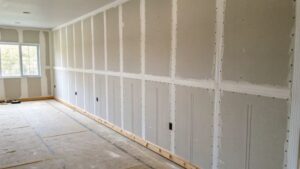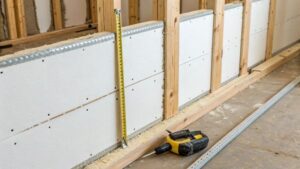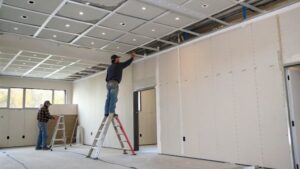It looks seamless and elegant, but is gypsum really the best choice for your ceiling?
Yes, gypsum is excellent for ceilings in dry areas due to its fire resistance, smooth finish, and sound insulation, but it’s not ideal for high-humidity spaces.

I’ve installed gypsum ceilings in countless living rooms, bedrooms, and offices, and the result is always refined and seamless. Made from pressed natural gypsum, these ceilings create a smooth, unbroken surface that adds a high-end feel to interiors. They also perform well for fire safety and sound insulation, which is why they are common in high-quality residential projects. However, gypsum is sensitive to moisture. In humid environments, it can mold, warp, and deteriorate unless you use moisture-resistant variants and proper installation techniques.
What is gypsum ceiling?
It’s the same core material found in drywall, but custom-shaped for ceilings.
A gypsum ceiling is a flat or decorative ceiling made from gypsum boards or panels, often finished to create a seamless, paint-ready surface.

Gypsum ceilings are usually built by fixing gypsum boards to a metal or wooden frame suspended from the structural ceiling. The boards are cut to fit, then joints are taped and coated for a smooth effect. I’ve seen them used for both simple flat ceilings and elaborate false ceilings with lighting features. The final surface can be painted or textured. While gypsum is strong and safe in dry interiors, using it in bathrooms or kitchens without special moisture-resistant boards or protective finishes will cause problems over time. That’s why material choice always depends on the room’s purpose.
Benefits and limitations of gypsum ceilings
| Benefits | Limitations |
|---|---|
| Fire-resistant | Moisture-sensitive |
| Great sound insulation | Needs skilled installation |
| Smooth, seamless finish | More labor-intensive than PVC |
| Can be shaped for custom designs | Not ideal for very humid areas |
Is gypsum ceiling good or bad?
It’s not simply good or bad—it depends on where it’s used.
Gypsum ceilings are good for dry indoor spaces, offering elegance and safety, but they perform poorly in damp areas unless modified for moisture resistance.

I encourage my clients to think in terms of location performance. Gypsum ceilings excel in living rooms, bedrooms, and offices. They provide an upscale, solid feel that PVC ceilings often lack. They can also hide wiring and integrate lighting beautifully. But in bathrooms, kitchens, or coastal environments with long-term humidity exposure, standard gypsum fails. I’ve seen mold develop on improperly sealed gypsum ceilings within a few months of installation. This is why I recommend moisture-resistant gypsum or PVC for those environments instead.
Location recommendations
| Space | Gypsum Ceiling | PVC Ceiling |
|---|---|---|
| Living room | ✓ Excellent | ✓ Possible |
| Bedroom | ✓ Excellent | ✓ Possible |
| Bathroom | X Standard; use moisture-resistant type | ✓ Excellent |
| Kitchen | ✓ Moisture-resistant only | ✓ Excellent |
Which is better, PVC ceiling or gypsum ceiling?
Neither wins in every situation—it’s about the right match.
PVC is better for damp areas due to water resistance, while gypsum suits dry areas for its fire safety, elegance, and sound insulation.

I’ve seen projects where each material played to its strength. In luxury apartments, we often install gypsum ceilings in living and sleeping areas to achieve a seamless, premium look. In the same projects, bathrooms and kitchens use PVC ceilings for easy cleaning and moisture resistance. PVC is lighter, faster to install, and cheaper in the short term. Gypsum takes more labor, but offers better fire resistance and aesthetics. In terms of environmental impact, gypsum is generally safer, while PVC can release harmful substances in high heat. My approach is always to combine both: gypsum where the focus is on visual quality, PVC where durability in moisture is critical.
Comparison of PVC vs Gypsum ceilings
| Feature | PVC Ceiling | Gypsum Ceiling |
|---|---|---|
| Moisture resistance | High | Low unless moisture-resistant type |
| Fire resistance | Low–medium | High |
| Maintenance | Very low | Low |
| Installation speed | Fast | Moderate |
| Cost | Lower | Higher |
| Visual finish | Good | Excellent |
Conclusion
Gypsum ceilings excel in dry, design-focused spaces, while PVC dominates in damp areas. The smartest choice often blends both, using each where it performs best.



